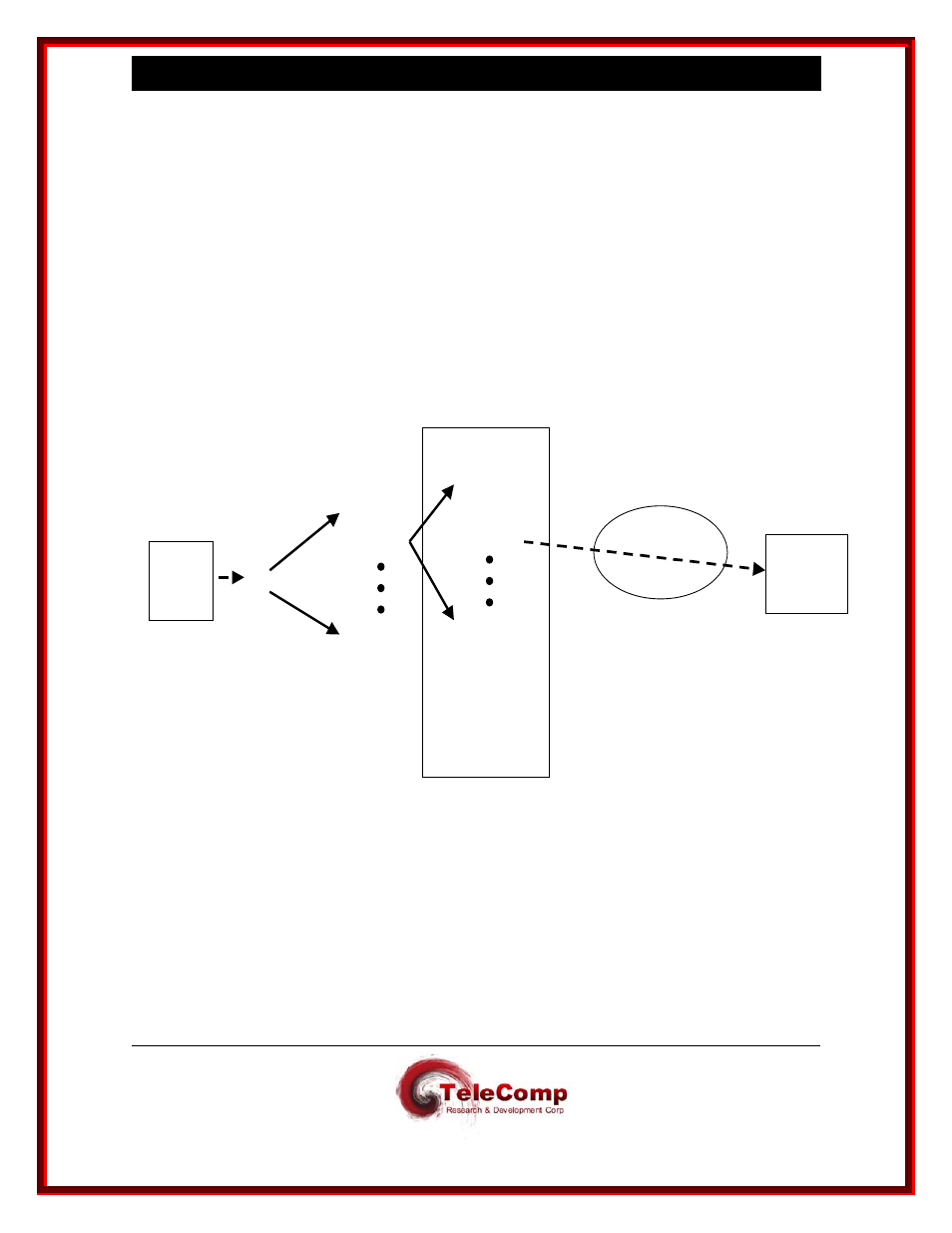Datatek UMI User Manual
Page 22

U N I V E R S A L M E D I A T I O N I N T E R F A C E ( U M I ) U S E R M A N U A L
04/30/09
22
entered, the telnet default (23) is used. The user also has the option to enter a mnemonic host
name which has been previously administered into the UMI’s host table. The session is
terminated when the UMI virtual port receives a disconnect from the BNS side of the call, e.g.,
when the calling user uses the attention sequence.
If a Domain Name Server has been defined on the UMI, the calling user may also enter a fully
qualified destination name (e.g. “server.ab.company.com”) to be resolved. It is also possible to
override the TCP port while still resolving the IP address. For example, the dial string
“server.ab.company.com 50030” selects TCP port 50030 and then asks DNS to resolve
“server.ab.company.com” to an IP address.
The following diagram illustrates the configuration elements affecting call setup in the BNS-to-IP
direction.
(SAM Port)
Virtual Port
(SAM Port)
Virtual Port
(SAM Port)
Virtual Port
TCP/IP
Endpoint
UMI Module
BNS Address
BNS Group
BNS Group
BNS Group
IP
Network
TCP Circuit established as either
a PDD from the UMI virtual port
to a TCP/IP endpoint; or via a dialer
session presented by the UMI to
the BNS originating endpoint.
BNS
Endpoint
Referring to the above diagram, a BNS endpoint calls an address in the BNS node’s configuration
database which is associated with one or more receive groups. This address and the receive
group(s) it is associated with would have been established using the node’s
enter address
and
enter group
commands, respectively. Each receive group contains some of the ports on the
“SAM504” as members. This would have been configured on the node using
enter sam
(port
component), using the module address of the UMI and a series of available boards/ports from the
table at the beginning of this section. When the call is established between the originating
endpoint and the destination address, the appropriate receive group is selected, and, from the
node’s perspective, a SAM port within that group is selected to receive the call. In reality, the
corresponding virtual port on the UMI receives the call. If a PDD has been established for this